In the Beginning
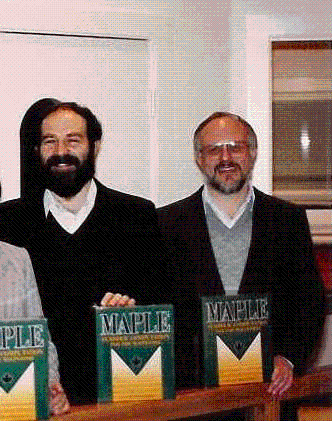
In the beginning (1980) there were two of us: Gaston Gonnet and Keith Geddes
25 Years of Maple:
Some Historical Comments
Keith Geddes
Maple Conference 2006
In the Beginning

In the beginning (1980) there were two of us: Gaston Gonnet and Keith Geddes
Pre-Maple

The "red room" in the Math and Computer building at UW
Early Computer Algebra Systems
How large do integers need to be?
| > |
| (1) |
| > |
| (2) |
| > |
| (3) |
Note: The maximum length of integers above is 10 digits.
The old algorithm `gcd/reduced` (which uses a PRS algorithm) yields the same result. It even seems fast enough on modern computers.However, notice the large integers that can be generated by intermediate calculations!
We very soon ran into GCD computations that could not be completed on a system that limits the size of integers to only 100 digits.
| > |
| (4) |
| > |
| {--> enter gcd/reduced, args = 2500000*x^4-487995500*x^3-2442003501*x^2+308523500*x+4504301, 125000*x^3+1110250*x^2+2426470*x+2501
{--> enter gcd/reduced/prs, args = 2500000*x^4-487995500*x^3-2442003501*x^2+308523500*x+4504301, 125000*x^3+1110250*x^2+2426470*x+2501 |
|
| {--> enter gcd/reduced/prs, args = 2500000, 487995500 | |
| <-- exit gcd/reduced/prs (now in gcd/reduced/content) = 500}
{--> enter gcd/reduced/prs, args = 500, 2442003501 |
|
| <-- exit gcd/reduced/prs (now in gcd/reduced/content) = 1} | |
| {--> enter gcd/reduced/prs, args = 125000, 1110250 | |
| <-- exit gcd/reduced/prs (now in gcd/reduced/content) = 250}
{--> enter gcd/reduced/prs, args = 250, 2426470 |
|
| <-- exit gcd/reduced/prs (now in gcd/reduced/content) = 10}
{--> enter gcd/reduced/prs, args = 10, 2501 |
|
| <-- exit gcd/reduced/prs (now in gcd/reduced/content) = 1} | |
| {--> enter gcd/reduced/prs, args = 1, 1 | |
| <-- exit gcd/reduced/prs (now in gcd/reduced/prs) = 1} | |
| {--> enter gcd/reduced/prs, args = 12931048027941398437500000000000, 64681102235762874984375000000000 | |
| <-- exit gcd/reduced/prs (now in gcd/reduced/content) = 25862096055882796875000000000} | |
| <-- exit gcd/reduced/prs (now in gcd/reduced) = 2501+500*x} | |
| <-- exit gcd/reduced (now at top level) = 2501+500*x} | |
| (5) |
| > |
1980: The Age of Maple arrives!
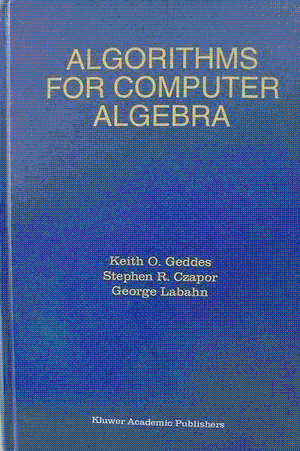
How many Person-Years of R&D for Maple?
| > |
| > |
| > |
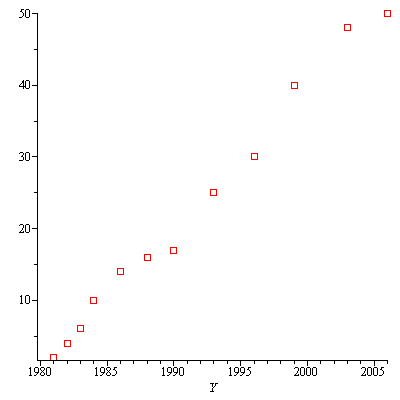 |
| > |
| > |
| > |
| (6) |
| > |
| > |
| (7) |
| > |
| (8) |
| > |
| (9) |
| > |
| > |
| > |
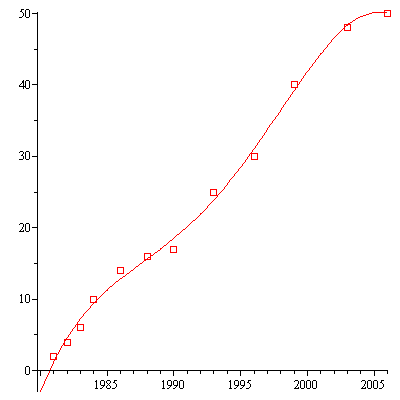 |
| > |
| > |
| (10) |
| > |
Voila!
1981-1985
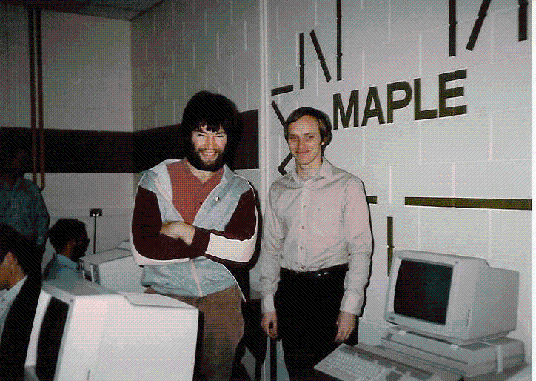
Michael Monagan and Greg Fee
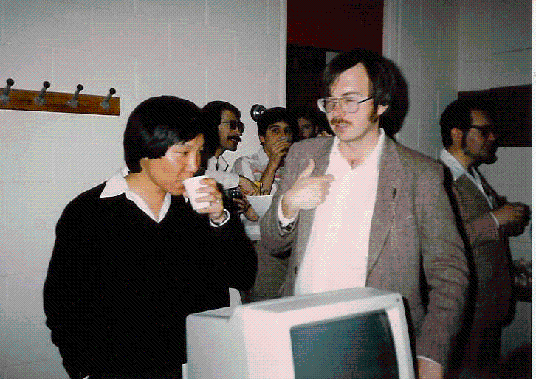
Benton Leong and Howard Johnson

A good view of the "ASCII Maple logo"
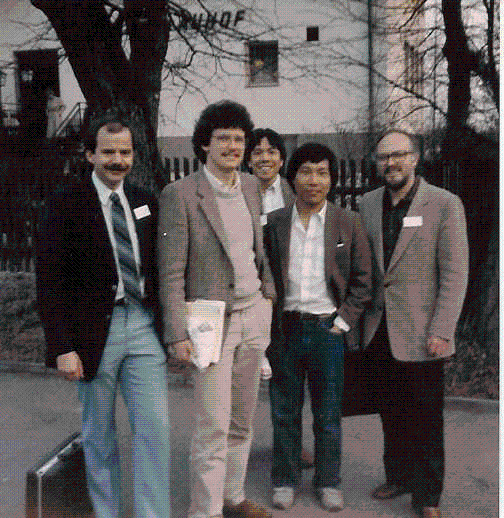
Stan Devitt, Stephen Watt, Bruce Char, Benton Leong, Keith Geddes
(in Linz, Austria for the 1985 Eurocal conference)

A geeky picture of me in Linz, Austria (1985)
1986-2006: More Pictures
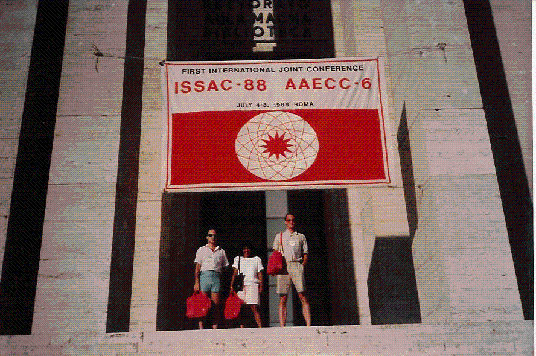
ISSAC '88 in Rome -- the first to be named "ISSAC"
 Rome 1988
Rome 1988
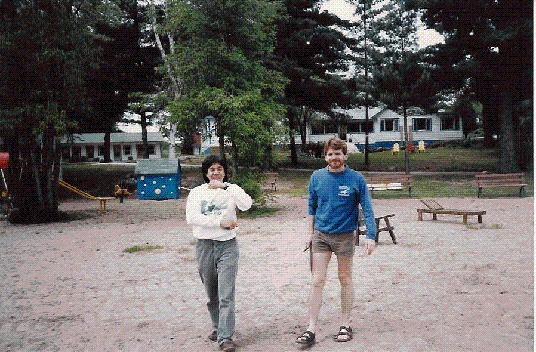 Bruce Char and Mark Mutrie, Maple Retreat 1989
Bruce Char and Mark Mutrie, Maple Retreat 1989
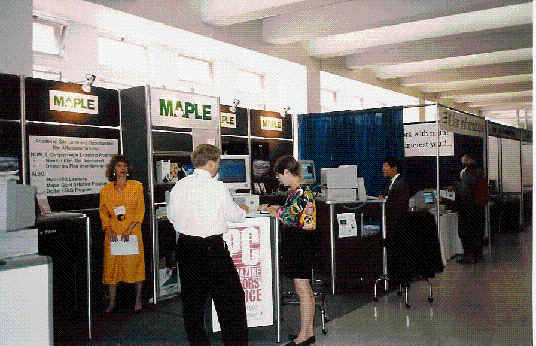 Maple booth, NCTM 1992, Quebec City
Maple booth, NCTM 1992, Quebec City
 A view of the competition, NCTM 1992, Quebec City
A view of the competition, NCTM 1992, Quebec City
 Stephen Watt and I with hosts, Kiev 1993
Stephen Watt and I with hosts, Kiev 1993
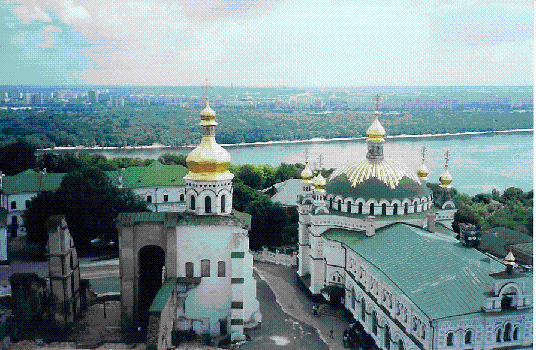 Kiev 1993
Kiev 1993
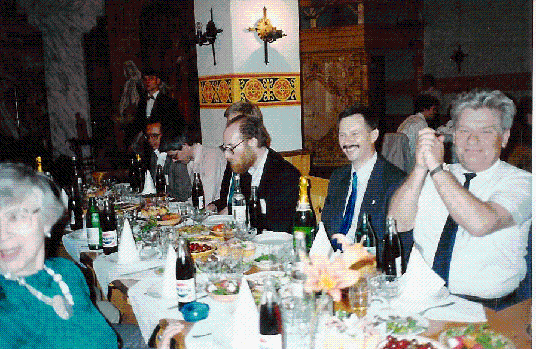 The vodka banquet, Kiev 1993
The vodka banquet, Kiev 1993
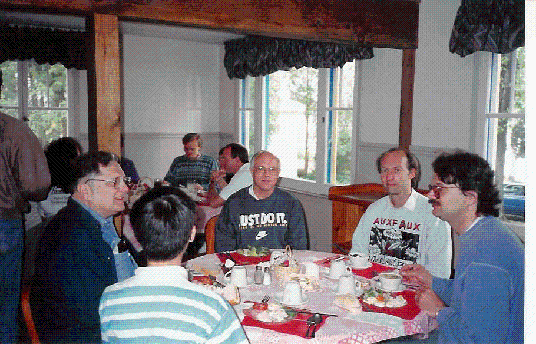 W. Kahan, K. Geddes, D. Jeffrey, G. Labahn, Ha Le, Maple Retreat 1994
W. Kahan, K. Geddes, D. Jeffrey, G. Labahn, Ha Le, Maple Retreat 1994
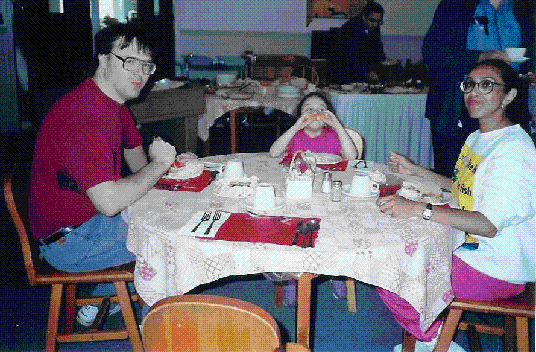 Rob Corless family, Maple Retreat 1994
Rob Corless family, Maple Retreat 1994
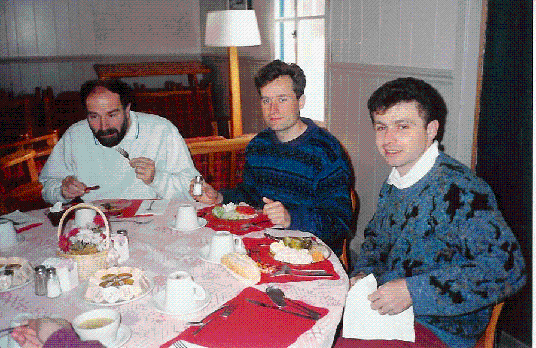
G. Gonnet, B. Salvy, M. Bronstein, Maple Retreat 1994
 Erich Kaltofen with Allan Bonadio and ??, Maple Retreat 1994
Erich Kaltofen with Allan Bonadio and ??, Maple Retreat 1994
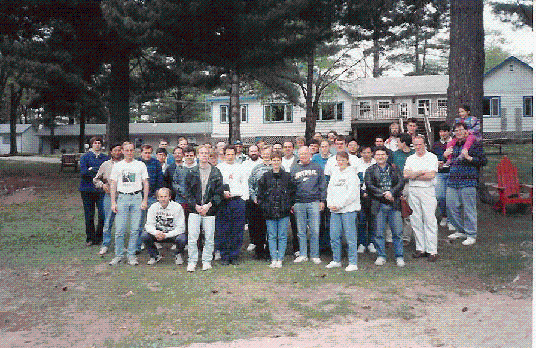 Group picture, Maple Retreat 1994
Group picture, Maple Retreat 1994
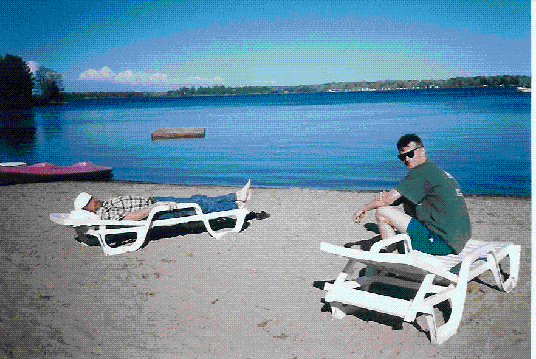 Hard at work at the Maple Retreat, Sparrow Lake, Ontario, 1997
Hard at work at the Maple Retreat, Sparrow Lake, Ontario, 1997

A view outside the ISSAC '97 conference, Maui, Hawaii
 Keith and Debbie, ISSAC '97, Maui, Hawaii
Keith and Debbie, ISSAC '97, Maui, Hawaii